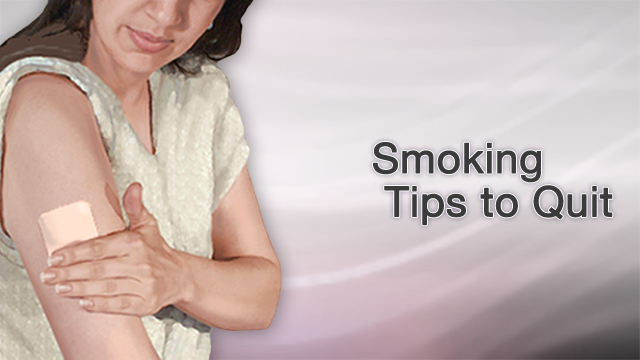Smoking and asthma
Things that make your allergies or asthma worse are called triggers. Smoking is a trigger for many people who have asthma.

You do not have to be a smoker for smoking to cause harm. Exposure to someone else's smoking (called secondhand smoke) is a trigger for asthma attacks in children and adults.
Smoking can weaken lung function. When you have asthma and you smoke, your lungs will weaken more rapidly. Smoking around children with asthma will weaken their lung function, too.
If you Smoke
If you smoke, ask your health care provider to help you quit. There are many ways to quit smoking. List the reasons why you want to quit. Then set a quit date. Many people need to try quitting more than once. Keep trying if you do not succeed at first.

Ask your provider about:
Secondhand Smoke and Children
Children who are around others who smoke are much more likely to:
- Need emergency room care more often
- Miss school more often
- Have asthma that is harder to control
- Have more colds
- Begin smoking themselves
No one should smoke in your house. This includes you and your visitors.
Smokers should smoke outside and wear a coat. The coat will keep smoke particles from sticking to their clothes. They should leave the coat outside or put it somewhere away from a child with asthma.
Ask people who work at your child's daycare, school, and anyone else who takes care of your child if they smoke. If they do, make sure they smoke away from your child.
Stay away from restaurants and bars that allow smoking. Or ask for a table as far away from smokers as possible.
When you travel, do not stay in rooms that allow smoking.
Secondhand Smoke and Adults
Secondhand smoke will also cause more asthma attacks and make allergies worse in adults.
If there are smokers at your workplace, ask someone about policies regarding if and where smoking is allowed. To help with secondhand smoke at work:
- Make sure there are proper containers for smokers to throw away their cigarette butts and matches.
- Ask coworkers who smoke to keep their coats away from work areas.
- Use a fan and keep windows open, if possible.
References
Balmes JR, Holm SM. Indoor and outdoor air pollution. In: Broaddus VC, Ernst JD, King TE, et al, eds. Murray and Nadel's Textbook of Respiratory Medicine. 7th ed. Philadelphia, PA: Elsevier; 2022:chap 102.
Gotts JE, Benowitz NL. Smoking hazards: cigarettes, vaping, marijuana. In: Broaddus VC, Ernst JD, King TE, et al, eds. Murray and Nadel's Textbook of Respiratory Medicine. 7th ed. Philadelphia, PA: Elsevier; 2022:chap 65.
Viswanathan RK, Busse WW. Management of asthma in adolescents and adults. In: Burks AW, Holgate ST, O'Hehir RE, et al, eds. Middleton's Allergy: Principles and Practice. 9th ed. Philadelphia, PA: Elsevier; 2020:chap 52.
Woodruff PG, Bhakta NR, Ortega VE, Lambrecht BN, Fahy JV. Asthma: pathogenesis and phenotypes. In: Broaddus VC, Ernst JD, King TE, et al, eds. Murray and Nadel's Textbook of Respiratory Medicine. 7th ed. Philadelphia, PA: Elsevier; 2022:chap 60.
Review Date: 2/8/2024


